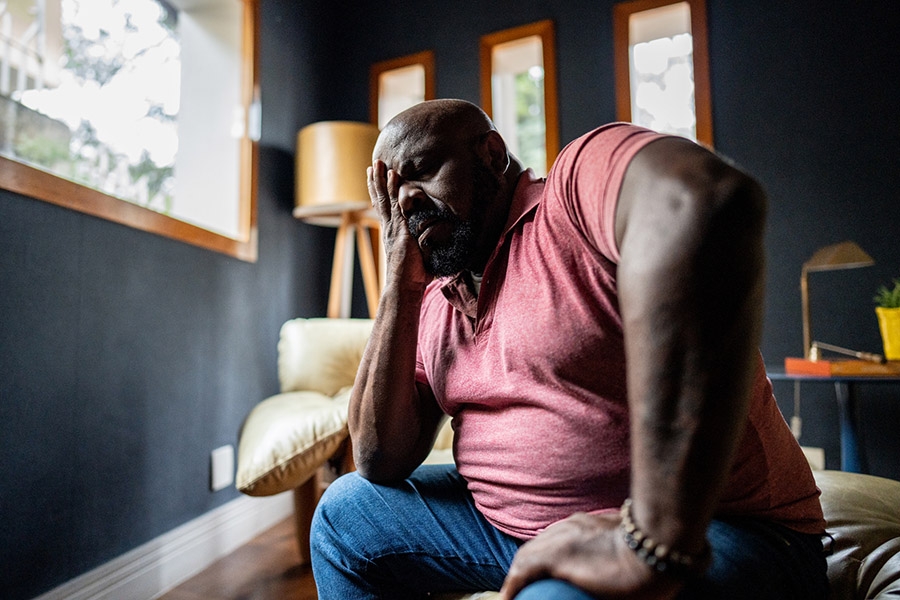Having a serious illness can affect all areas of a person's life — as well as the lives of their loved ones and caregivers. Palliative care can make a complicated condition easier to manage. It helps people with serious health conditions manage their symptoms and treatment, helping them live life to the fullest. But many patients don't realize it's an appropriate option or know how they can benefit from it.
As a pulmonary nurse practitioner at the Temple Lung Center, I've seen how much palliative care dramatically improves the lives of my patients with advanced lung disease. I've also found that many people don't know what palliative care is for and how it might help.
Some patients and their families are concerned by the recommendation to start palliative care because they confuse palliative care with hospice (end-of-life) care. I reassure them that palliative care and hospice are not the same and that starting palliative care doesn't mean stopping their other treatment. In fact, palliative care can make treatment more successful because it helps patients navigate their care and can offer relief from symptoms and side effects.
Here are answers to some of the most common questions I hear from patients and their families who are considering palliative care.
What is palliative care?
Palliative care is specialized medical care that focuses on enhancing quality of life for people with serious illness and their families. I tell my patients that while their other specialists are highly trained in treating their health condition, the palliative care team's specialty is helping them live meaningful, enjoyable lives.
That includes helping patients manage their symptoms and the side effects of their treatment. Depending on a patient's needs, they may receive a wide range of therapies and medications to manage problems such as pain, insomnia, shortness of breath, bowel and bladder problems, and fatigue. Physical and occupational therapists help patients maximize their mobility safely and address challenges caused by their condition. Registered dietitians help patients get the nutrition they need to feel their best.
Relief from pain and other symptoms is just one part of the program. Palliative care also addresses the emotional, social, financial, and practical problems that can arise when a person has a serious medical condition. Patients and their families may be connected to support groups or receive counseling or spiritual support to help them cope with their condition. And we connect patients and their families to resources to help with housing, transportation and financial concerns.
While palliative care programs focus on improving the present, they also help patients and their families look to the future, helping them understand how their health status may change so they can set goals for longer-term treatment.
How is palliative care different from hospice care?
Though palliative care and hospice care both offer comfort to patients and their families, I tell my patients that the differences are important. First, while a patient's illness may be life-threatening, palliative care does not mean that the patient is dying. Depending on their diagnosis, patients receiving palliative care may expect to live with their condition for years or decades or to recover from it completely. Hospice care, on the other hand, is intended for patients with terminal illnesses who are nearing the end of their lives.
Hospice care is for patients who are expected to live for six months or less. Palliative care can be started at any point during a person's illness, and it can continue for as long as it is needed. In many cases, I encourage patients to start palliative care soon after they receive their diagnosis.
Palliative care can continue while a patient is undergoing active treatment, including chemotherapy, radiation, dialysis, or surgery. While patients receiving hospice care can still receive medication to enhance their quality of life, such as drugs to manage pain, anxiety, or high blood pressure, treatments intended to cure their condition are discontinued and their illness is allowed to run its natural course.
Does insurance cover palliative care?
Palliative care medical services are typically partially or fully covered by private insurance, as well as by Medicare and Medicaid. Veterans may be eligible for coverage through the Department of Veterans Affairs.
When is it time to start palliative care?
If you or a loved one have a serious illness and you're coping with anxiety or worries about what it will mean for the future, managing symptoms, or dealing with the side effects of treatments, it's time to consider palliative care.
I tell my patients and their families that there's no reason to wait — palliative care can improve their overall quality of life as they learn how to live with their illness. It can help them manage their symptoms so they have more mental and physical energy to pursue the things in life that they enjoy.
My patients often tell me they're surprised by how much starting a palliative care program improved their daily lives. It can even affect outcomes: Studies show that patients enrolled in palliative care live longer and experience fewer symptoms.
They also feel more emotionally supported, and they experience less anxiety, stress, and depression. Both patients and families are more satisfied with the patient's care, too.
How do I get started?
If you or a loved one are dealing with a serious illness, ask your doctor for a referral to the Temple Health palliative care program.
Helpful Resources
Looking for more information?

